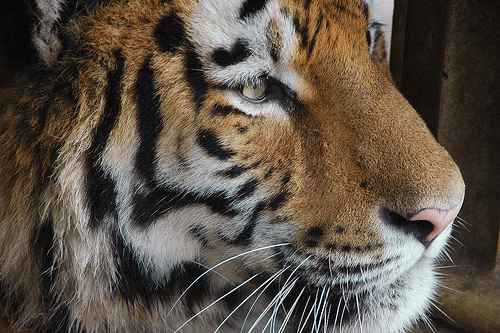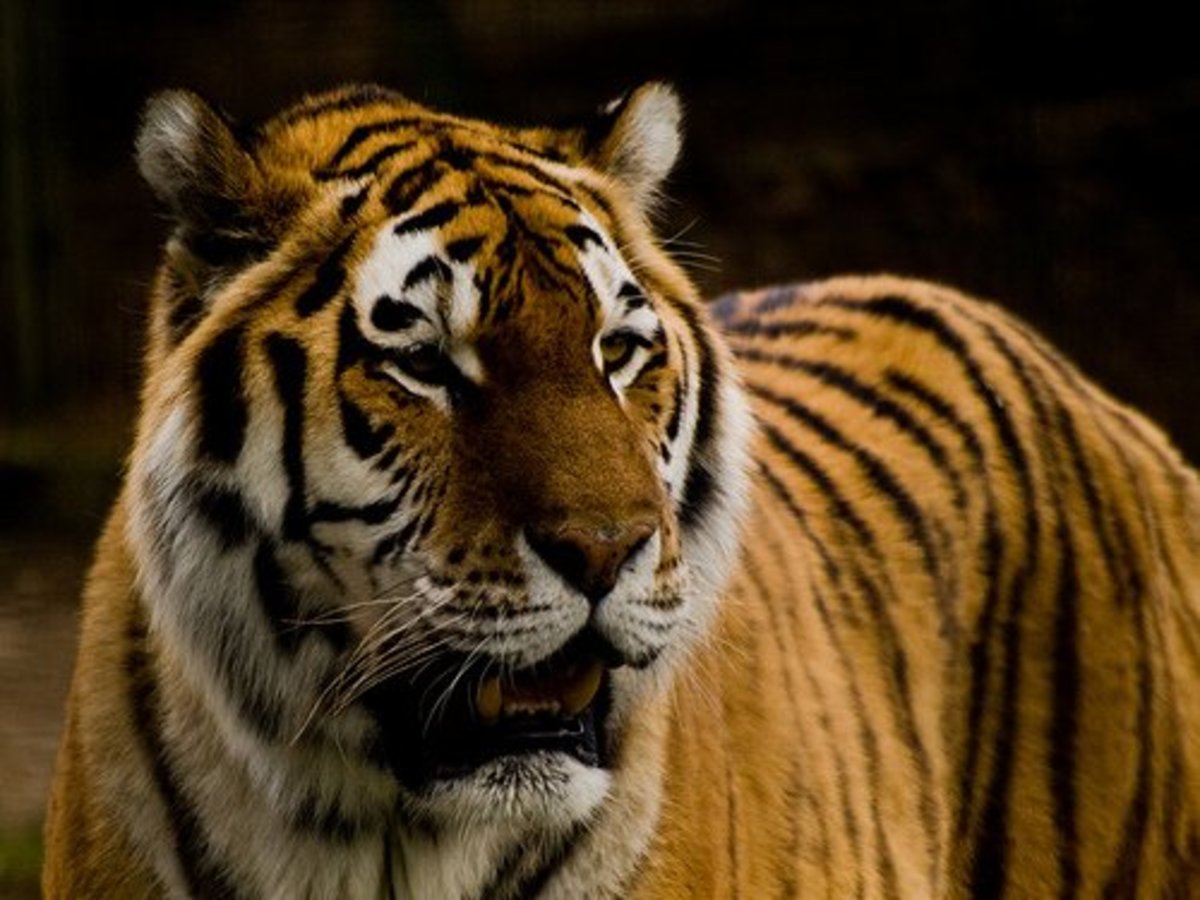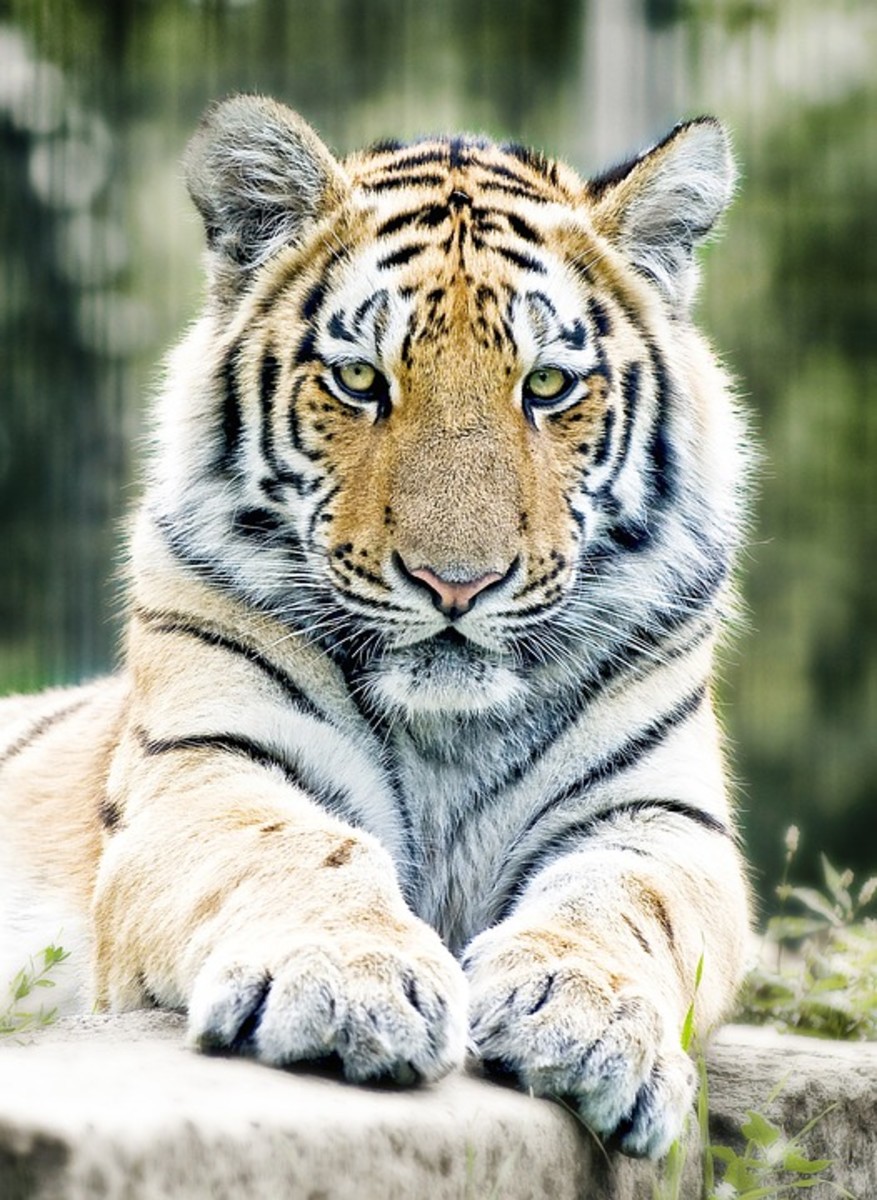Siberian Tigers Starve To Death
It was reported in several newspapers from around the 10th March 2010 that 11 Siberian Tigers had starved to death in a zoo in Northern China. These turned out to be those in the privately owned 'Shenyang Forest Wild Animal Zoo' in the very cold Liaoning province. The animals had died over a period of some three months.
The zoo authorities denied that the deaths had anything to do with starvation and listed a number of causes including two animals shot by police for attacking a member of staff.
A local animal protection group said that the tigers had been held for months indoors in cramped accommodation and fed nothing but chicken carcases. Such a diet over the long term could undoubtedly lead to 'long term starvation' by failing to provide sufficient nutrients. Lacking the building blocks of life the deaths could result for a variety of reasons but all leading back to one root cause.

The Siberian or Amur Tiger (Panthera tigris altaica) is a critically endangered subspecies of tiger with estimates of numbers in the wild to be below 500. As with all tigers its demise is largely due to poaching and encroachment on its natural habitat.
Although it recieves legal protection the situation in the wild is not good.
Within captivity the situation is much better. There are two captive populations. The first of these is an excellent studbook managed population. This is where zoos with animals of known parentage sign a 'memorandum of participation' and allow their Amur Tigers to be managed by a species coordinator. The species coordinator works hand in hand with the studbook holder. Between them they manage the animals genetically. They ensure that any Siberian Marriages are at best from unrelated stock and at worst between distant cousins. This makes for a healthy captive population and one which, in theory, after re-wilding could be returned to the wild.
The other captive population is unmanaged. This is where the animals are looked upon as commercial. Other than dollars little regard or consideration is given to the animals, Brother is bred with sister and mother with son (All White Tigers are bred in such a way) producing animals which are of little or no conservation value. They may still be worth money because they are perhaps bigger or specially marked but they also carry genetic defects, many of which are unseen.
The population of unmanaged tigers is much larger than the managed one. There are three main reasons for this.
- Greed
- The owners don't like the idea of someone on the outside telling them what to do.
- They think they know better
Young Siberian Tigers Feediing
Don't be fooled. This beautiful footage was not shot in the wild and the two animals were undoubtedly hand reared (tame when not feeding).
Further newspaper exposure of these tragic deaths learned that not only had the tigers not been fed but they had not been given drinking water. In cold freezing conditions dehydration is a very present threat.
All this evidence has emerged at a time when virtually the whole of the animal care staff were on strike due to not having been paid for months. The management claim not to have the experience to feed the tigers and so the remaining twenty or so animals were continuing to starve.
The management were actually considering feeding the flesh of the dead tigers to the other tigers if it was found to be uncontaminated by disease. Meanwhile the valuable skin and bones will be kept to one side for resale.

On the 14th March 2010 the Shenyang Municipal Government in northeast China stepped in with a cash injection of some 7 Million Yuan to feed animals and alleviate suffering. They also promised to investigate further.
As a part owner of the Park the Municipal Government were really obliged to take action. They will now take a more active role in running the collection.
There are something in the region of 6000 unmanaged tigers held in zoos and tiger farms in China. Is this a sign of things to come?
Read more of this and other zoo news by visiting Zoo News Digest and also visit the Zoo Hubs.
If you found this article of interest why not write one yourself? You could earn a little money too. Click on the Quick Guide To Hub Construction to learn how.






